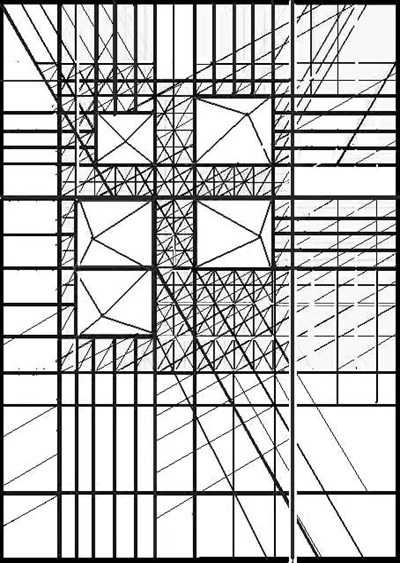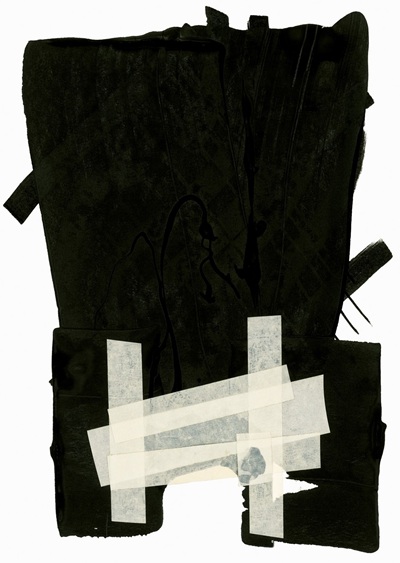
The work of one of the most important artists of the European avant-garde of the 20th century and his creative encounter with Greece are presented for the first time in Greece in the exhibition “Alexis Gritchenko (1883–1977). The Greek Adventure. A Ukrainian Pioneer in Greece,” at MOMus-Museum of Modern Art-Costakis Collection, at the Lazarist Monastery in Thessaloniki, from November 22, 2025, to April 30, 2026.
Alexis Gritchenko, born in Ukraine and trained in Kiev and St. Petersburg alongside avant-garde artists, was a painter and art theorist who combined the power of the Fauvist, Cubist, and Futurist movements with the Byzantine tradition. With his theory of “chromodynamics,” in which color expresses energy and spirituality, Gritchenko developed a personal visual language that bridges East and West.
His stay in Greece between 1921 and 1923 was decisive for his artistic development. He traveled around Athens, Mystras, Delphi, Olympia, Crete, Thessaloniki, and the islands, capturing nature and monuments in the dazzling Mediterranean light. In the works of this period, the Greek landscape is transformed into rhythmic cubist forms, where the spirit of antiquity and Byzantine tradition converses with modernism. The two exhibitions he held at that time in Athens, at the Parnassos Literary Society (1921) and the Byzantine and Christian Museum (1922), impressed the public and critics, who made special mention of his explosive use of color and the rhythm of his compositions.
The exhibition at MOMus-Museum of Modern Art-Costakis Collection brings together, among other things, many works from the Greek period from museums and private collections in Ukraine, France, England, the United States, Turkey, and Greece, presenting them alongside earlier and later works by the artist. The exhibition highlights the decisive importance of Greece as a stopping point in the formation of his personal style.
The exhibition was made possible thanks to the generous contribution of collector Michel Lièvre-Markovitch and Malabart Gallery LTD, London, which has the largest private collection of works by Alexis Gritchenko, the substantial assistance of Natalia Butterwick in compiling and documenting the rich material in the catalogue, and the scholarly collaboration of art historian Vita Susak.
The exhibition “Alexis Gritchenko (1883–1977). The Greek Adventure. A Ukrainian Pioneer in Greece” aims to give the Ukrainian pioneer his rightful place in Greek art history, highlighting an artist who, through light and color, managed to compose the Mediterranean in a new, modern visual language.

Alexis Gritchenko, Istanbul (Hookah Smoker), 1921, tempera and gouache on cardboard, 32.5 x 33.8 cm, Michel Lièvre-Markovitch Collection
The following museums, institutions, and private collectors are participating by lending works for the exhibition and catalog:
Michel Lièvre Markovitch, London-Athens
Malabart Gallery LTD, London
Ukrainian Museum of New York
Malyarstvo Art Gallery LLC, Lviv
National Gallery – Alexander Soutzos Museum, Athens
Archaeological Museum of Thessaloniki
Vasyl Stefanyk National Scientific Library of Ukraine, Lviv
Barnes Foundation, Philadelphia, USA
Alexander Demko and Gizella Lopusanszky, New York
Ömer Koç, Istanbul
Olexei Kurylyshin, Lviv
Daniel Sztul, Paris

Alexis Gritchenko, Mystra, May 1921, watercolor on paper, 20.2 x 17.3 cm, Daniel Sztul Collection
Exhibition curators
Michel Lièvre-Markovitch, Maria Tsantsanoglou
Scientific advisor
Vita Susak
Catalogue curator
Maria Tsantsanoglou
Catalogue material coordinator
Natalia Butterwick
Assistant curator
Angeliki Charistou
About the artist
Alexis Gritchenko (Krolevets, present-day Ukraine, 1883 – Vence, France, 1977) was a Ukrainian painter and art theorist whose work combined Byzantine tradition with modernist aesthetics. He initially studied literature and biology at the universities of Kiev, St. Petersburg, and Moscow before devoting himself to art. His visit to Paris in 1911 awakened his enthusiasm for modern art, particularly Cubism, while his travels in Italy in 1913–14 inspired him to combine the spatial and chromatic principles of the early Renaissance with the spiritual and morphological characteristics of Byzantine art. His theoretical writings explored the relationship between Byzantine and contemporary art, analyzing their morphological and structural affinities. After the 1917 Revolution, Gritchenko became a professor at the Free Art Workshops (Svomas) in Moscow and a member of the Committee for the Preservation of Historical Monuments. Although he was offered the directorship of the Tretyakov Gallery in 1919, he chose to leave Russia, traveling via Crimea to Constantinople and leaving behind all his works and possessions in Moscow. In April 1921, he settled in Greece, where he lived for long periods until October 1923, holding two exhibitions in Athens: at the Parnassos Literary Society (1921) and at the Byzantine and Christian Museum (1922). In these exhibitions, he presented a different image of Greece from the classical one: ancient ruins, churches, and landscapes rendered with sharp cubist planes and explosive, spiritual colors. In October 1923, he settled permanently in France, where he exhibited in important galleries and traveled frequently throughout Europe and the United States until his death in Vence, near Nice, in 1977.







Leave A Comment